After the documents published by BMW Group covering the design principles of BMW and the MINI brands, we report two interesting articles by Mercedes-Benz, that – albeit with a promotional intent – offer some insights on the design process and on the main aesthetic principles adopted by the company’s designers.
Eleven steps to a finished automobile
The path leading from the first drawing to the model approval takes around three years.
1. Drawing/Rendering: at the beginning of the design process there is always a drawing – hand-sketched on a piece of paper, or on a screen. Ideas that had previously only existed in the designer’s mind become visible.
- 2. Package: the basis for every design is the package, the sum of all the technical requirements. This is the basis upon which the sketches have to be implemented in such a way that proportions, dimensions and lines give a harmonious image.
3. 1:4 clay model: not everything can be simulated on the computer, which is why the next step is to create a clay model of every variant of a new automobile.
Only then can the designers decide whether their drafts create the desired effect in three dimensions, too. At the same time virtual models are always created on the computer.- 4. Model selection: the final form of the new car is chosen from numerous variants, in order to be formally examined in a 1:1 scale.
With the help of scanning and milling machines the first full-size “prototypes” are made.
- 5. 1:1 model: all the individual details of the new model are fashioned by hand. A deceptively real-looking model is created. All the characteristic features of the new car reveal themselves.
6. Interior sketches: first drawings and renderings are created for the design of the interior.
This is when the different equipment lines are born, i.e. the interiors where the future driver has to feel at ease.- 7. Interior clay model: the best way for the designer to experience the development of the form is with a 1-in-1 clay model, built, so to say, from the inside out. All the details are modelled until an aesthetically top-quality spatial feeling is created. As a rule, three alternative interiors are built for a decision to be made.
8. Colour & trim / operating and display concept (control and dis-play system): the material and colour options for the vehicle interior are determined.
From hundreds of fabric and leather samples as well as a virtually endless color spectrum the equipment variants for the future motor vehicle are determined. All the control and display elements are designed and developed to the optimum.- 9. Interior data control model: all the materials and colours are tested for effect on sophisticated 1-in-1 interior models under “real-life conditions”. Every material and every colour receives a code and is specified.
- 10. Final model: the exterior and the interior with all their details are brought together to make a model. A deceptively realistic representation is created. All the characteristic features of the new car reveal themselves. The exterior shape of the future Mercedes-Benz model becomes tangible.
- 11. Model approval: The final point of every design process is the model approval by the Board. If this is successful, there is nothing more to stop the production of the new Mercedes-Benz.
Design Philosophy
Design as a trademark

For Mercedes-Benz, design is literally a trademark. Because for over 100 years, design has characterized the image of the brand with the three-pointed star and has made visible typical Mercedes brand values such as fascination, responsibility and perfection.
Insofar, design has important tasks on two counts: the car’s lines fascinate not only because of the product itself, they also serve as a mirror of the philosophy and profile of the Stuttgart-based automotive brand. In other words: design makes brand values visible – and sets its mark on them.

“Love at first sight” has long been a slogan with a great reality content in the automotive trade.
After arousing love at first sight, one of the main tasks of the designers is to create a lasting relationship and maintain the love affair over many years.
The psychological arc goes from acquaint to recognize to brand awareness. It is not only a question of creating shapely, functional individual products, but of generating brand identity at the same time.
Identity and continuity

This guarantees that every new Mercedes-Benz possesses a clearly recognizable identity and shows its pedigree at the first glance.
Although every model displays unmistakeable analogies with its predecessors, it shows a clear formal further development and heralds a new design era.

Even when new models come out in a model series, they don’t detract from their predecessors, which continue to be desirable, in particular because of the enduring appeal of their design.

This is what they tap into, to care for and protect the style of the brand.

Over this long span of time the radiator grille has been repeatedly developed further in a formal sense. Both in its basic proportions and in its details the designers try to interpret this identifying feature anew, creating a fresh, modern image.
This principle also applies for the sporty counterpart, the so-called SL radiator, which was directly derived from racing in the 1950s and has since become a symbol not only for Mercedes sports cars, but also for the refined sportiness which finds its expression in many model series. In the same manner as the saloon radiator, this element is also constantly being newly interpreted in the formal sense.

And yet an all-too-strict interpretation of the striving for formal continuity entails the risk of running into a stylistic dead-end alley, where there is no room for individuality.
Every model – whether it is a luxury saloon, a coupé, a roadster or a compact-class car – presents itself as an independent “personality”.
The common, well-known basic patterns of the form language are combined with new style elements that at first appear surprising, yet in conjunction with familiar elements condition, ever anew, the perception of the Stuttgart-based automotive brand.
Trends and reality
Recognizing and shaping trends are important tasks of the auto designers. They live in the present, but their realm of action is the future.

The automaker has set up Advanced Design Studios at all these locations, to act as a sort of seismograph and pick up stylistic trends on site and analyze them to process them creatively.
A key issue here is the ability to intuitively grasp that which can attain formal timelessness, and to develop a sensitivity for important, sustainable tendencies in art, culture and society.

Because behind the manifold, diffuse wealth of future ideas on offer there lies the question of which of the currents does a brand like Mercedes-Benz want to allow itself to be influenced by. For Mercedes-Benz it has always been decisive to be, not fashionable, but modern.
That’s why what is important is to distinguish between short-lived tendencies and long-term developments and thus identify customers’ authentic expectations for the future.
Mercedes designers therefore do not need trend counseling but rather a well-founded prognosis and concrete answers to the questions as to how people will live tomorrow, how they will consume and – in particular – how to enthrall and inspire future customers.
The challenge consists in reflecting about possible future developments and to think further – beyond the reality that bears the seal of trends and fashion.
Passion and practicality

Today, more than ever, the emphasis is on making the journey itself an experience that is enjoyable because one feels at ease in one’s car, and be-cause the car goes well with one’s lifestyle – and because it is also possible to express style very well by means of the car. More than ever, the sensory perception of a
product therefore plays an exceptional role.
Experience and enjoyment

The interior of a car is conceived as a space for living, one where a lot of time is spent. That is why a pleasant environment is playing an increasingly important role in the motor car, too.
There is no doubt about it: customers have become both more demanding and more discerning over the years in this respect.
They not only want a wide choice of possible appointments from which to pick precisely that which suits their individual taste and personality. They now also set greater store by the use of high-quality materials and precision workmanship. These of course help convey, whilst also making more tangible, values such as aesthetics, comfort and quality as part of the overall visual impression.
The objective of the interior designers at Mercedes-Benz can be summed up in a few words: one gets into the car, closes the doors and immediately feels at home.
Form and function

The entire Mercedes-Benz strategic product initiative documents just how closely product strategy, design and technology work together at the Stuttgart-based automotive brand.
Mercedes designers are integrated right from the start in the concept phase and in the development process of new models.
Design work is team work; the design studio of a large-series manufacturer is not a dream factory. In a team both designers and engineers have to be ready to make compromises in order to find viable solutions that meet all the requirements.
This poses harder challenges for automotive designers than for their colleagues in other industrial sectors. The motor car is one of the few industrial products from which the customer expects not only a handsome exterior, but also a perfectly-designed interior as well. In addition to this, the car is a product made up from different individual areas. Many of these details are quite as complex as entire devices produced in other industrial sectors.
Function and aesthetics, technology and art: what at first sight sounds contradictory has to blend into a harmonious overall concept in a modern car. The objective has been attained if design work and the engineering arts complement each other on a sophisticated level. Thus, practicality and good design are not natural enemies. Technological leadership is an integral part of the brand philosophy and it is the task of design to make this mission visible, while setting trends in its own way.
Visions and emotions
This is what show cars, concept and research vehicles are also for. They are conceived and developed in order to impulse auto-visions, to test new vehicle concepts and technologies, to intensify the dialogue with customers and also to analyze the public’s reaction to these auto-ideas. Mercedes-Benz also carries out such auto-studies in order to take a look at the future in respect of stylistic developments and to offer designers a possibility to develop and implement new form languages.
But whether a unique research vehicle or series-produced – a motor vehicle is always perceived with one’s senses. No-one can evade its emotional effect. Long before one has any idea about the relevant technical facts or innovations, through its mere appearance – that is, through its design – it awakens desires. It is the responsibility of the designers to awaken and keep alive these emotions. The goal of their work is to create automobiles in the field of ten-sion between technology and design, that are characterized both by technical and emotional intelligence.
The designers’ work is a success if customers buy cars not only for purely rational reasons but also with their heart – and mind.
(Source: Mercedes-Benz)

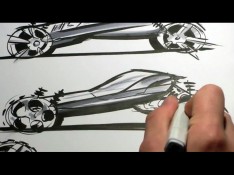
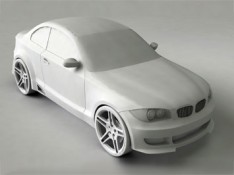
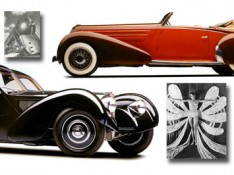
 share on Buffer
share on Buffer







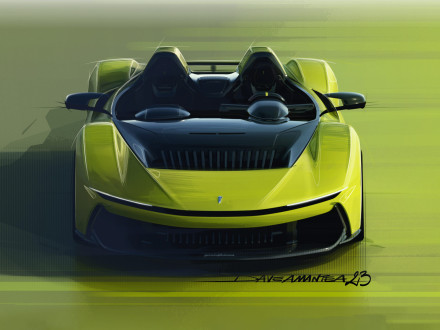
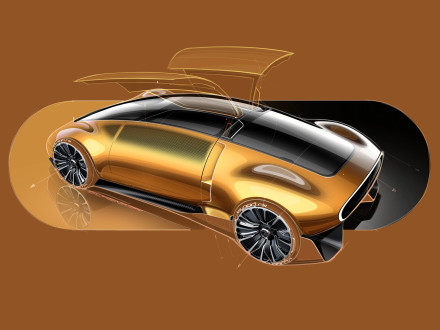
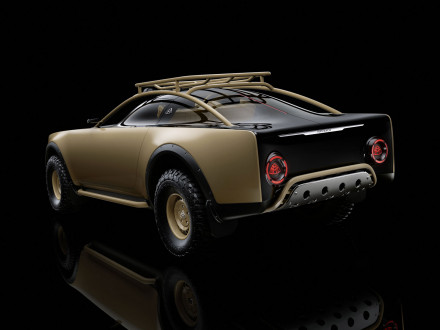






Let me guess. Hideous overuse of chrome and LED’s.
Hi
I designed some facilities products of car that i interest to show you. pleas recommend me, where i can email my designs